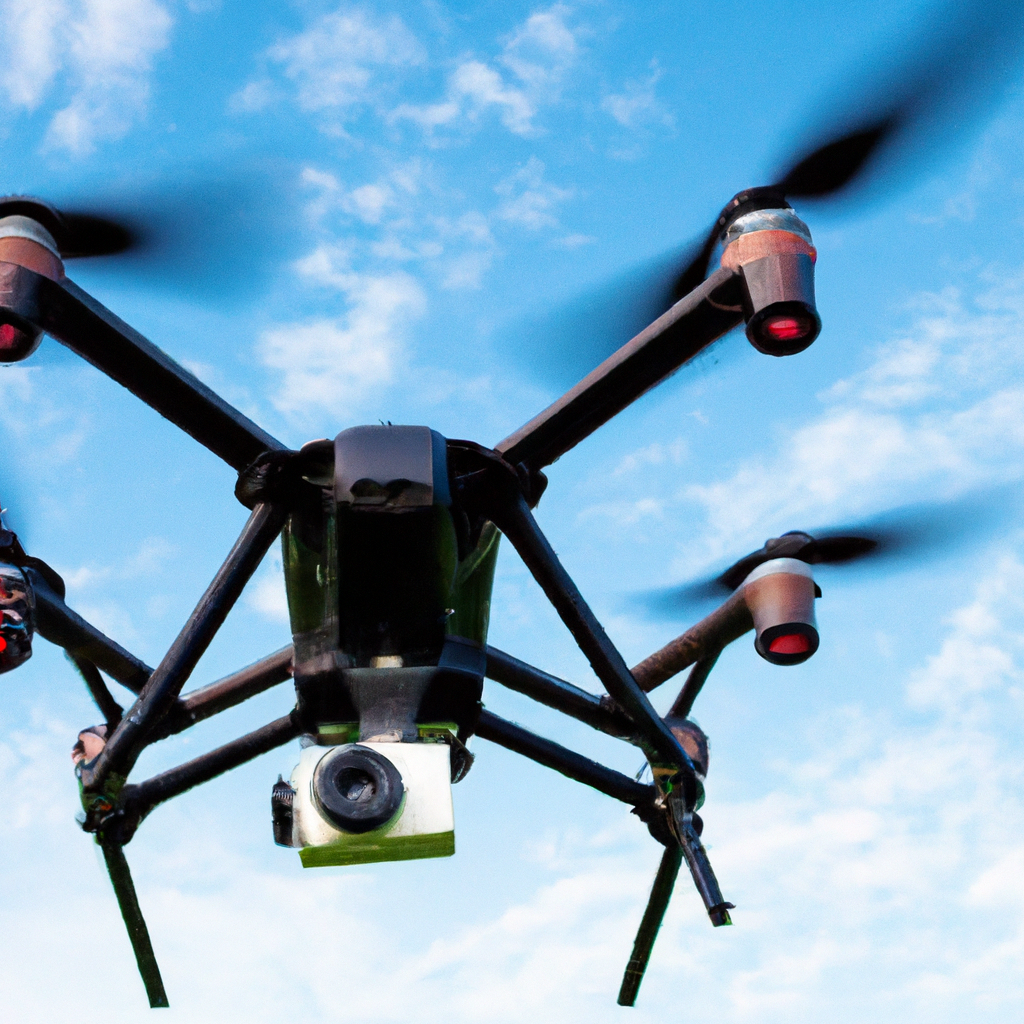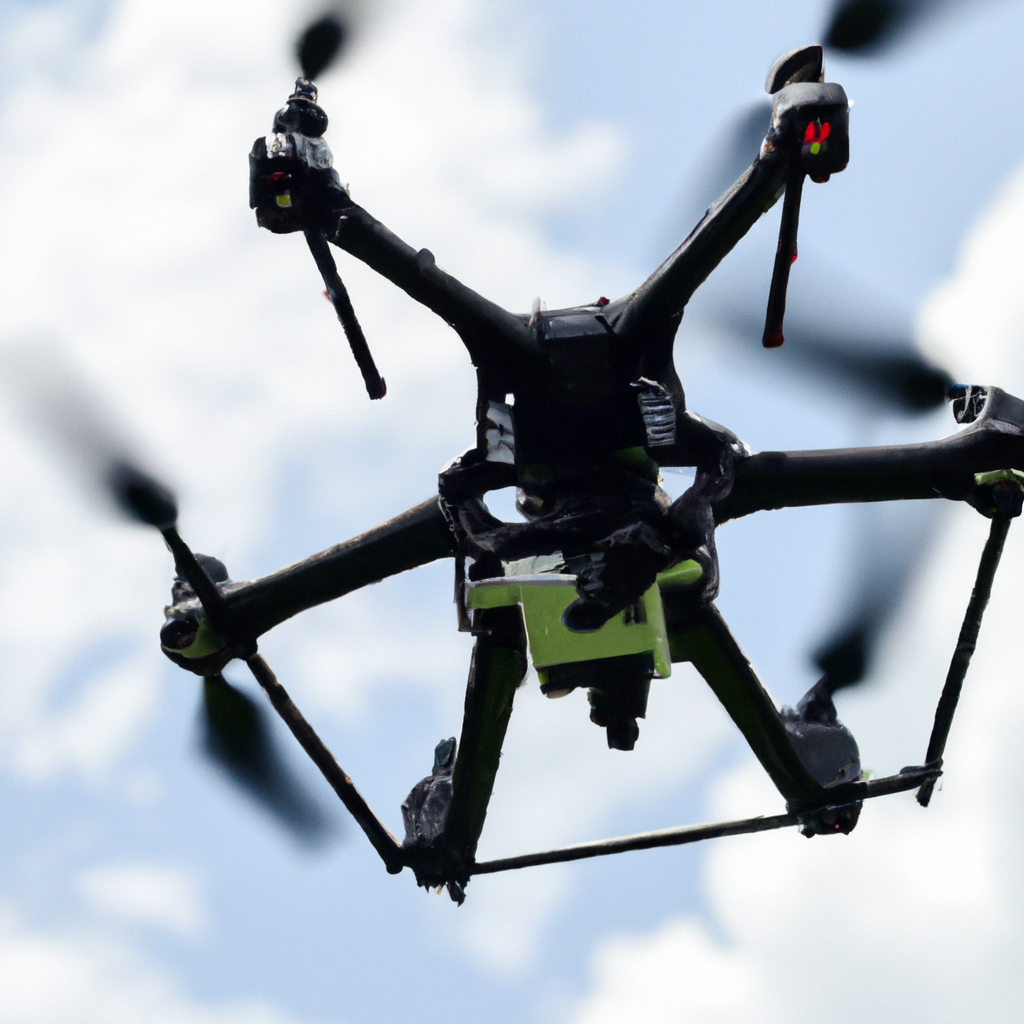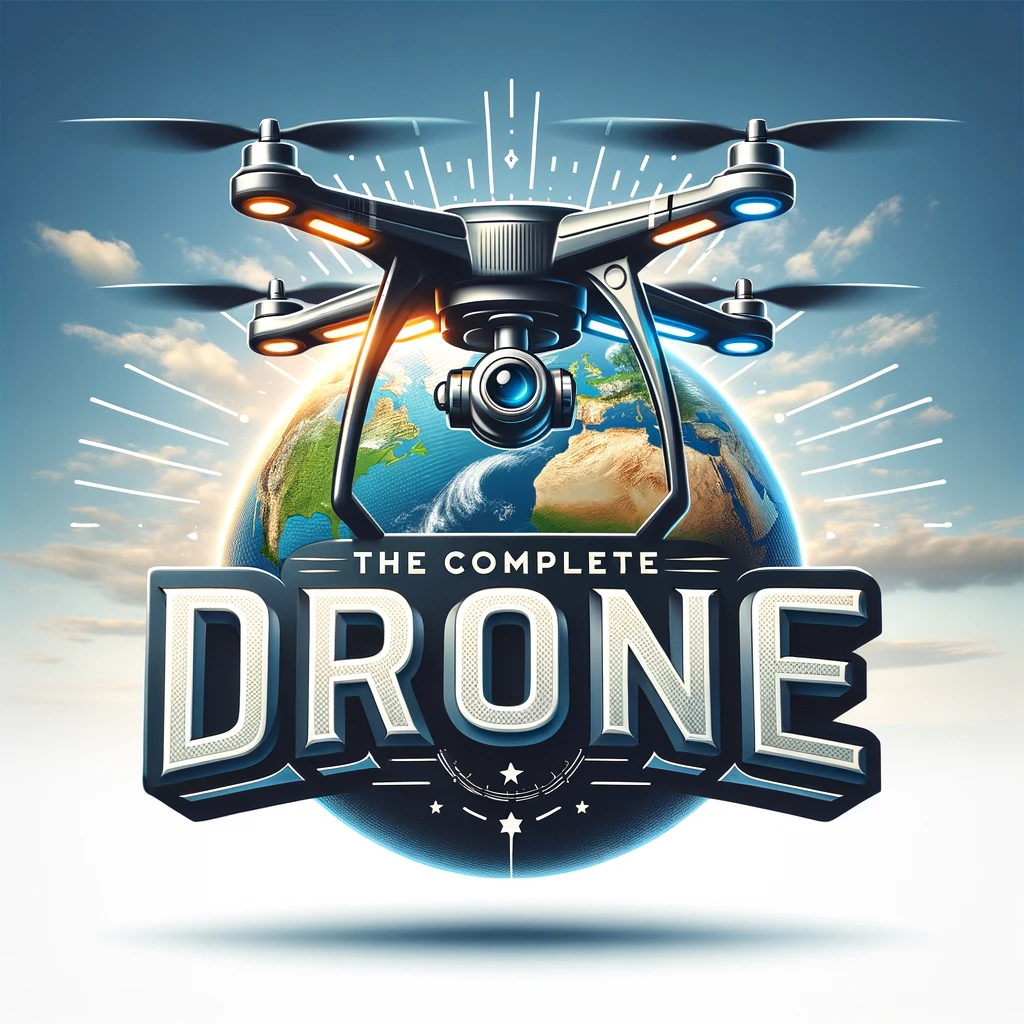Have you ever wondered how drones are able to take flight in the sky with such ease? It all comes down to their unique power sources. In this article, we will explore the various ways in which drones are powered, uncovering the technology behind their impressive capabilities. From traditional fuel-powered engines to cutting-edge electric systems, we will dive into the fascinating world of drone power and discover what makes these flying machines soar.

This image is property of images.pexels.com.
Internal Combustion Engines
Two-Stroke Engines
Two-stroke engines are commonly found in smaller drones and are known for their simplicity and lightweight design. They work by combining the intake, compression, combustion, and exhaust strokes into just two strokes of the piston, making them more compact and efficient. The fuel-air mixture is ignited by a spark plug, resulting in the release of energy that powers the drone’s rotor. While two-stroke engines offer a lightweight solution, they tend to produce more emissions and are less fuel-efficient compared to four-stroke engines.
Four-Stroke Engines
Four-stroke engines are commonly used in larger drones and offer a more efficient and cleaner alternative to two-stroke engines. These engines operate on a traditional four-stroke cycle: intake, compression, combustion, and exhaust. The fuel-air mixture is ignited by a spark plug, resulting in the expansion of gases that power the drone’s rotor. Four-stroke engines are generally heavier and require more complex systems than two-stroke engines, but they are known for their better fuel efficiency and reduced emissions.
Advantages of Internal Combustion Engines
Internal combustion engines offer several advantages for powering drones. Firstly, they provide high power output, allowing drones to achieve greater speeds and carry heavier payloads. Secondly, they offer a long flight range due to the high energy density of liquid fuels. Additionally, these engines have a well-established infrastructure for refueling and maintenance, making them easily accessible and cost-effective. They also have a proven track record of reliability, making them suitable for a wide range of applications.
Disadvantages of Internal Combustion Engines
While internal combustion engines have their advantages, they also come with some drawbacks. One major disadvantage is their environmental impact, as they produce emissions such as carbon dioxide, nitrogen oxide, and particulate matter. These emissions contribute to air pollution and have negative effects on the environment and human health. Additionally, internal combustion engines require regular maintenance, including oil changes and spark plug replacements, which can increase the overall operational costs. Furthermore, the combustion process generates significant heat, requiring additional cooling mechanisms to prevent engine overheating.
Electric Motors
Brushed Motors
Brushed motors are one of the earliest types of electric motors used in drones. They consist of a rotating armature surrounded by a permanent magnet. The brushes and commutator deliver power to the armature, causing it to rotate and generate thrust. Brushed motors are relatively simple and inexpensive but tend to have lower efficiency and shorter lifespan compared to other motor types. They also require regular maintenance to clean or replace the brushes.
Brushless Motors
Brushless motors have become the standard for modern drones due to their higher efficiency and improved durability. Instead of brushes and commutators, these motors use electronic speed controllers (ESCs) to control the flow of electricity. The ESCs switch the current direction within the motor’s windings, resulting in the rotation of the rotor. Brushless motors offer higher power-to-weight ratios, smoother operation, and longer lifespans compared to brushed motors. They also require less maintenance, making them a popular choice for drone manufacturers.
Advantages of Electric Motors
Electric motors offer several advantages over internal combustion engines. Firstly, they are more environmentally friendly as they produce zero emissions during operation. This not only helps reduce air pollution but also promotes sustainability and supports the transition to clean energy sources. Secondly, electric motors provide instant torque, allowing drones to have quicker response times and better maneuverability. Additionally, electric motors are quieter than internal combustion engines, reducing noise pollution during drone operations. Lastly, electric motors have fewer moving parts, resulting in reduced maintenance requirements and lower operational costs.
Disadvantages of Electric Motors
While electric motors have their advantages, they also have some limitations. One major drawback is the limited flight time due to the energy density of batteries. Drones powered by electric motors often have shorter flight durations compared to those using internal combustion engines. This can be a significant limitation for certain applications that require long endurance missions. Furthermore, recharging batteries can take a significant amount of time, which can affect the turnaround time for consecutive drone operations. Additionally, the initial cost of electric drones may be higher due to the price of high-quality batteries and electronic components.
Fuel Types
Gasoline
Gasoline is one of the most commonly used fuels in internal combustion engines for drones. It is a volatile liquid fuel derived from crude oil and contains a mixture of hydrocarbons. Gasoline offers a high energy density, allowing drones to fly for extended periods before refueling. It also provides good combustion characteristics and can be easily stored and transported. However, one major drawback of gasoline is its environmental impact, as it emits carbon dioxide and other greenhouse gases when burned.
Jet Fuel
Jet fuel, also known as aviation turbine fuel, is another popular choice for powering drones with internal combustion engines. Jet fuel is specifically designed for use in gas turbine engines, which are commonly found in aircraft. It has a similar composition to kerosene and offers a high energy density, ensuring longer flight durations. Jet fuel is widely available at airports and has a well-established infrastructure for fueling and distribution. However, like gasoline, it also produces emissions when burned.
Diesel
Diesel is another fuel option for powering internal combustion engines in drones. It is a heavier hydrocarbon fuel that offers high-energy density and improved fuel efficiency compared to gasoline. Diesel engines are known for their torque and durability, making them suitable for heavy-duty applications. Diesel fuel also has a well-developed infrastructure for distribution and is readily available in many countries. However, diesel engines tend to produce more particulate matter emissions, which can contribute to air pollution.
Battery Types
Lithium-Polymer (Li-Po)
Lithium-polymer batteries, often referred to as Li-Po batteries, are commonly used in electric-powered drones. These batteries utilize lithium-ion technology but have a polymer electrolyte, making them lighter and more flexible. Li-Po batteries offer high energy density, allowing drones to achieve longer flight times. They also have a high discharge rate, providing the necessary power for drone motors. However, Li-Po batteries require careful handling and regular maintenance to prevent safety hazards such as thermal runaway or swelling.
Lithium-Ion
Lithium-ion batteries are widely used in various electronic devices, including drones. These batteries offer a good balance between energy density, weight, and safety. They have a relatively high energy density, allowing drones to have longer flight durations. Lithium-ion batteries also have a slower self-discharge rate, meaning they can retain their charge for longer periods, even when not in use. However, they have a lower discharge rate compared to Li-Po batteries, which can affect the overall performance of the drone.
Nickel Cadmium (NiCd)
Nickel cadmium batteries, often referred to as NiCd batteries, were commonly used in the past but have been largely replaced by newer technologies. NiCd batteries offer high discharge rates and can handle a large number of charge-discharge cycles. They are also known for their ability to operate in a wide range of temperatures. However, NiCd batteries have a lower energy density compared to lithium batteries and are prone to the “memory effect,” where the battery gradually loses capacity if not fully discharged before recharging. They also contain toxic materials, making them less environmentally friendly.
Nickel-Metal Hydride (NiMH)
Nickel-metal hydride batteries, or NiMH batteries, are an improvement over NiCd batteries and are still used in some drones. They offer higher energy density and fewer environmental concerns compared to NiCd batteries. NiMH batteries have a higher capacity and are less prone to the memory effect. They are also more environmentally friendly as they do not contain toxic materials. However, NiMH batteries have a lower energy density compared to lithium batteries, meaning drones powered by NiMH batteries may have shorter flight times.

This image is property of images.pexels.com.
Energy Efficiency
Propulsion Systems
The choice of propulsion system greatly affects the energy efficiency of a drone. Both internal combustion engines and electric motors can be optimized for better fuel or energy consumption. For internal combustion engines, technologies like direct fuel injection and turbocharging can improve fuel efficiency. Electric motors can benefit from advancements in motor design, such as reducing internal resistance or using more efficient magnet materials. Overall, the efficiency of the propulsion system determines how effectively the energy is converted into useful work, whether it’s producing thrust or rotating the drone’s propellers.
Aerodynamics
Aerodynamics plays a crucial role in the energy efficiency of a drone. The design and shape of the drone’s body, wings, and propellers can greatly impact its overall drag and lift characteristics. By reducing drag, drones can fly more efficiently and require less energy to maintain a certain speed or altitude. Streamlined designs, optimized wing profiles, and efficient rotor blade designs can all contribute to improved aerodynamic efficiency. Additionally, reducing unnecessary weight from the drone and minimizing exposed surfaces can further enhance energy efficiency.
Weight Reduction
Reducing the weight of a drone can significantly improve its energy efficiency. Every additional gram of weight requires more energy to lift and keep the drone airborne. Manufacturers can use lightweight materials such as carbon fiber or aluminum alloys for the drone’s frame and components to reduce overall weight without sacrificing structural integrity. Furthermore, optimizing the design and eliminating unnecessary components or features can also contribute to weight reduction. A lighter drone requires less energy to operate and can achieve longer flight durations.
Power Management Systems
Efficient power management systems are essential for maximizing energy efficiency in drones. These systems regulate the flow of electrical or fuel energy and distribute it to various components and systems within the drone. By optimizing power delivery and minimizing energy losses, power management systems ensure that energy is used efficiently and effectively. This includes features like intelligent battery monitoring to prevent over-discharge or overcharging, voltage regulation, and power distribution control. Well-designed power management systems can prolong flight times and optimize overall energy usage.
Power Systems Comparison
Performance
When comparing power systems, performance is a crucial factor. Internal combustion engines, especially high-displacement ones, generally offer greater power output and acceleration compared to electric motors. They are capable of providing more thrust, allowing drones to achieve higher speeds and carry heavier payloads. On the other hand, electric motors can deliver instant torque and offer precise control, resulting in better maneuverability and responsiveness. The choice between internal combustion engines and electric motors depends on the specific requirements of the drone’s intended use, balancing factors like power, acceleration, and control.
Maintenance
Maintenance requirements differ between internal combustion engines and electric motors. Internal combustion engines typically require more regular maintenance, with tasks like oil changes, spark plug replacements, and periodic tuning. Electric motors, on the other hand, have fewer moving parts and generally require less maintenance. With proper care and occasional component replacement, electric motors can offer longer operational lifespans with minimal maintenance. However, the maintenance of batteries, especially for electric drones, is an important consideration as they need proper charging, storage, and periodic replacement.
Cost
The cost of power systems is an important consideration for drone manufacturers and operators. Internal combustion engines are generally cheaper upfront, both in terms of the engine itself and the fuel infrastructure. Gasoline and jet fuel are widely available, making them more accessible and cost-effective for many applications. Electric systems, on the other hand, have higher initial costs due to the price of high-quality batteries and electronic components. However, the operational costs of electric systems can be lower in the long run, considering the lower cost of recharging batteries compared to fuel.
Environmental Impact
The environmental impact of power systems is a growing concern in the drone industry. Internal combustion engines produce emissions such as carbon dioxide, nitrogen oxide, and particulate matter. These emissions contribute to air pollution and have negative effects on the environment and human health. Electric motors, on the other hand, produce zero emissions during operation, making them more environmentally friendly. However, the environmental impact of electric power systems extends to the production and disposal of batteries, which can involve the extraction of raw materials and proper recycling processes.

This image is property of images.pexels.com.
Solar-Powered Drones
Photovoltaic Cells
Solar-powered drones utilize photovoltaic cells to convert sunlight directly into electrical energy. These cells are typically made of semiconductor materials, such as silicon, that produce an electric current when exposed to light. The generated electricity can then be stored in batteries or used to power the drone’s motors and electronics directly. Photovoltaic cells offer a clean and renewable source of energy, reducing the reliance on traditional fuel sources and minimizing the environmental impact. While solar-powered drones are still limited by the availability and intensity of sunlight, advancements in photovoltaic technology are continuously improving their energy efficiency.
Advantages of Solar-Powered Drones
Solar-powered drones offer several benefits. Firstly, they have the potential for unlimited flight endurance under ideal conditions, as long as there is access to sunlight. This makes them suitable for applications that require extended flight times, such as surveillance or environmental monitoring. Secondly, solar-powered drones produce no emissions during operation, contributing to a greener and more sustainable future. They also have reduced operational costs, as the energy source (sunlight) is free and readily available. Moreover, solar-powered drones can operate in remote areas without easy access to fuel infrastructure.
Limitations of Solar-Powered Drones
While solar-powered drones have their advantages, they also face limitations. The energy conversion efficiency of photovoltaic cells is relatively low, meaning a large surface area of solar panels is required to generate significant power. This can make the drones larger and heavier, limiting their maneuverability and payload capacity. Additionally, solar-powered drones are highly dependent on sunlight availability, which can vary depending on weather conditions and location. Limited sunlight can result in reduced flight durations or the need for additional battery storage to compensate for periods of low or no sunlight.
Hybrid Power Systems
Combination of Internal Combustion Engines and Electric Motors
Hybrid power systems combine both internal combustion engines and electric motors to provide a more versatile and efficient solution for powering drones. These systems allow for the benefits of both power sources to be utilized, such as the high power output and long flight range of internal combustion engines, combined with the instant torque and environmental friendliness of electric motors. Hybrid drones can utilize internal combustion engines for sustained flight and use electric motors for quick acceleration or maneuvering. By optimizing the power distribution between the two sources, hybrid power systems offer improved energy efficiency and operational flexibility.
Advantages of Hybrid Power Systems
Hybrid power systems offer several advantages over single power source systems. Firstly, they provide increased flexibility and versatility, allowing drones to adapt to different flight conditions and mission requirements. Hybrid drones can switch between internal combustion engines and electric motors, optimizing power output and energy consumption based on the specific needs of the moment. Secondly, hybrid power systems offer improved energy efficiency, as the combination of power sources reduces wasted energy and increases overall system performance. This can result in longer flight durations and reduced operational costs.
Limitations of Hybrid Power Systems
While hybrid power systems offer advantages, they also have limitations. Hybrid drones are generally more complex and require additional components and systems to manage the power distribution and synchronization between internal combustion engines and electric motors. This can increase the overall weight and cost of the drone. Additionally, hybrid power systems require more advanced control algorithms and management systems to ensure optimal power distribution and prevent potential issues like system integration or component failure. Nonetheless, the benefits of improved energy efficiency and operational flexibility can outweigh these limitations in certain applications.

Fuel Cell Technology
How Fuel Cells Work
Fuel cells are electrochemical devices that convert the chemical energy of a fuel, typically hydrogen, into electrical energy. They work by combining hydrogen fuel and oxygen from the air in the presence of a catalyst. This reaction generates an electric current, water vapor, and heat as byproducts. Fuel cells can operate continuously as long as there is a supply of fuel and oxygen. The electrical energy produced by the fuel cell can be used to power electric motors in drones directly or stored in batteries for later use. Fuel cell technology offers the potential for clean and efficient power generation in drones.
Advantages of Fuel Cell Technology
Fuel cell technology offers several advantages for powering drones. Firstly, fuel cells produce zero emissions during operation, as the only byproduct is water vapor. This makes them highly environmentally friendly and promotes sustainable energy use. Secondly, fuel cells provide a high energy density, allowing drones to achieve longer flight durations compared to conventional batteries. Additionally, fuel cells can be refueled or have their fuel source replenished quickly, reducing downtime between flights. Fuel cell technology also offers a more even power output compared to batteries, ensuring consistent performance throughout the flight.
Limitations of Fuel Cell Technology
While fuel cell technology has its advantages, it also has limitations. The major limitation is the availability and storage of hydrogen fuel. Hydrogen is not readily available and requires special infrastructure for production, storage, and distribution. It is also highly flammable and requires careful handling. Furthermore, current fuel cell systems are relatively bulky and heavy compared to other power systems, limiting their applicability in smaller drones. The cost of fuel cell systems can also be higher compared to conventional power systems, making them less accessible for some applications.
Future Innovations
Alternative Fuel Sources
The future of drone power systems lies in the exploration and development of alternative fuel sources. Researchers and engineers are actively exploring biofuels, hydrogen fuel cells, and other renewable energy sources to power drones. Biofuels, derived from biomass or organic waste, offer a more sustainable and environmentally friendly alternative to traditional fossil fuels. Hydrogen fuel cells provide an efficient and clean energy conversion method, but advancements are needed in hydrogen production and storage technologies. Continued research and development in alternative fuel sources will contribute to reducing the environmental impact and improving the energy efficiency of drone power systems.
Wireless Charging
Wireless charging technology has the potential to revolutionize the way drones are powered. Instead of relying on physical connections or battery swaps, wireless charging enables drones to receive power wirelessly while in operation or at charging stations. This would eliminate the need for manual battery replacements or recharging, allowing for seamless and continuous drone operations. Wireless charging systems are already being developed and implemented in various industries, and their application to drone power systems is an exciting prospect for the future. However, challenges such as efficiency, range, and compatibility need to be addressed to make wireless charging a practical and widespread solution for drones.
Energy Harvesting
Energy harvesting involves capturing and utilizing ambient energy sources to power drones. This can include harvesting solar energy using flexible photovoltaic cells integrated into the drone’s surface, capturing energy from wind gusts, or utilizing kinetic energy from vibrations during flight. By harnessing these energy sources, drones can potentially extend their flight durations or reduce their reliance on traditional power sources. While energy harvesting technologies are still in the early stages of development for drone applications, ongoing research holds promise for future advancements in energy capture and utilization.
In conclusion, the power systems used in drones have a significant impact on their performance, efficiency, and environmental footprint. Internal combustion engines offer high power output and long flight ranges but come with emissions and maintenance requirements. Electric motors provide cleaner operations and instant torque but face limitations in flight time and charging. The choice between these power systems depends on specific mission requirements and considerations of performance, maintenance, cost, and environmental impact. Furthermore, advancements in hybrid power systems, fuel cell technology, and the exploration of alternative fuels, wireless charging, and energy harvesting present exciting opportunities for the future of drone power systems. By continually improving energy efficiency and reducing environmental impact, the drone industry can further unlock the potential of this transformative technology.


